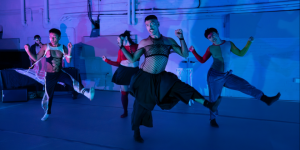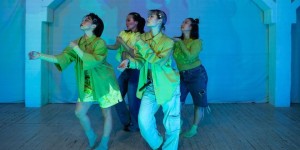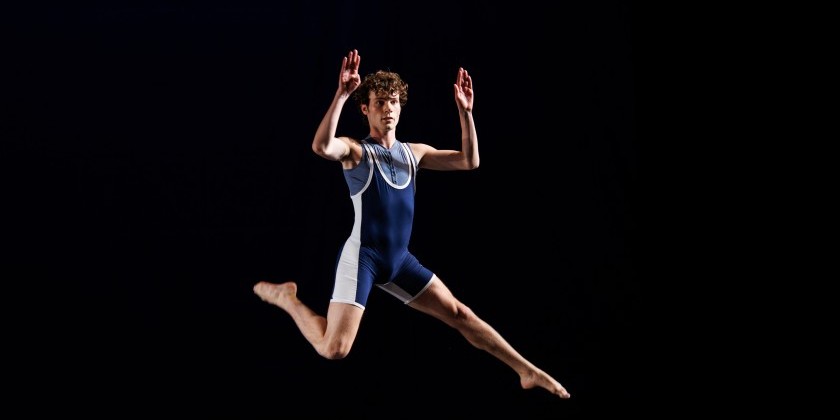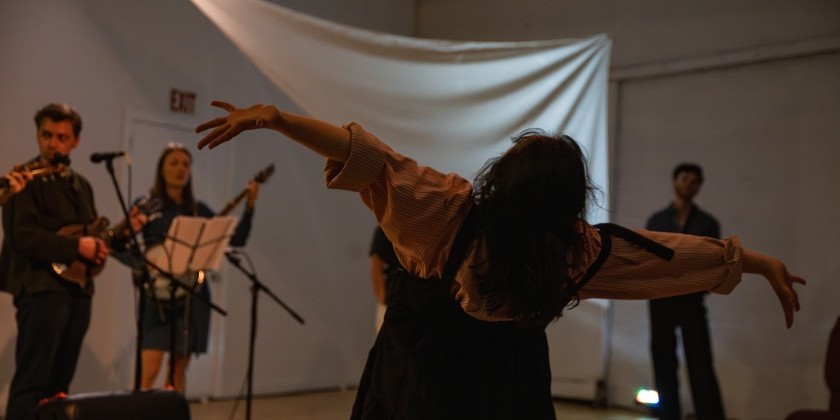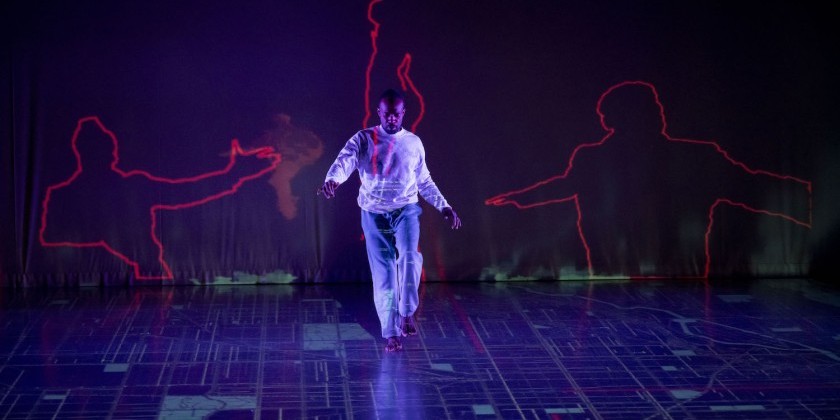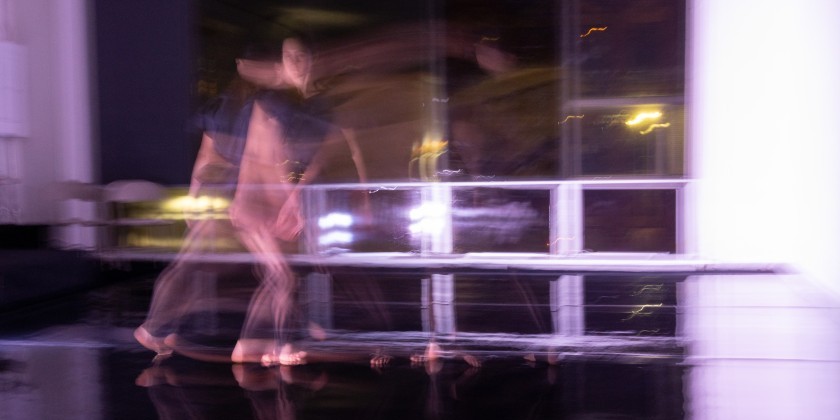IMPRESSIONS: "THAT SHOW," a Celebratory Evening Showcasing Emerging New York Performance Artists
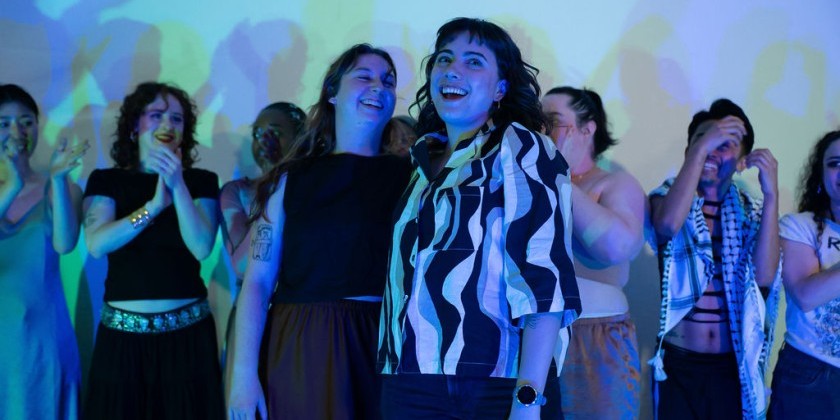
Presented in Collaboration with Index Space
Presented in collaboration with Index Space, 120 Walker Street, 3rd Floor
Producers: Taylor Schmuelgen and Kayla White
THAT SHOW is a community gathering of artists and creatives — half performance, half celebration. Featuring a selection of emerging performance artists, THAT SHOW encourages collaboration, risk taking, and making new friends. The first cohort of artists was presented on the evening of April 27th, 2024 at Index Space in Chinatown andfeatures new works by movement artists Kimie Parker, Sumayyah Smith & MadiO'Halloran (in collaboration), Adrienne Swan, Sheila Jackson, Yolette A Yellow-Duke, Peter Alfred Elizalde, and Mack Lawrence & Lulu West (in collaboration).
Last Saturday night, I found myself in a loft in Chinatown delightedly surrounded by a slew of familiar faces. A certain sector of the New York dance scene — young, determined, earnest — mingled, doused in blue and green technicolor lights and a disco ball.
I found a seat by a window and peered through the fire escape bars, marveling at the quintessential-ness of it all; gathering a few floors above Canal Street in a multi-purpose event space (the other half of the room was lined with Mac desktops) to watch some new dances. I’m not the type to pretend these kinds of things don’t move me.
When one such familiar face — whom I knew would be performing that evening — breezed into the room at five-till, I asked aloud, “Is that Mack just arriving?”
“Yeah, they were working a shift,” someone replied. Ah.
When producers Taylor Schmuelgen and Kayla White welcomed the audience with, “Are you guys here for THAT SHOW?” I knew they’d been waiting to say that for months. With a few remarks, including White’s quip, “I hope you got a drink at the bar and said hi to my mom,” THAT SHOW began.
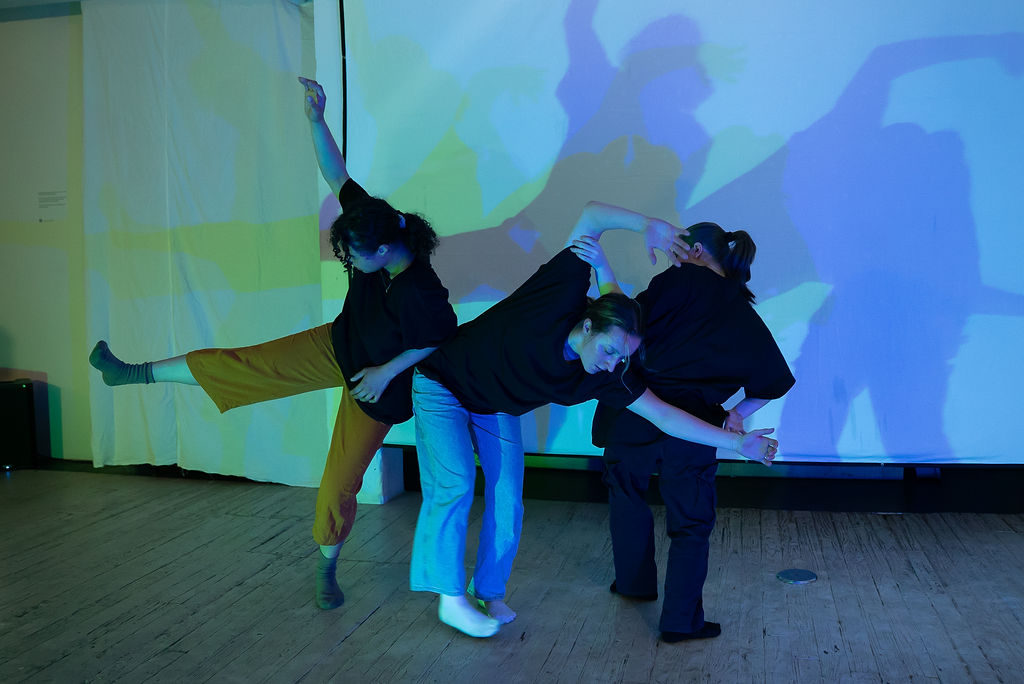
The intimacy of the space immediately became apparent during the things we let hold us by Sheila Jackson. The tight space and proximity to the audience did not quell the dancers’ (Sheila Jackson, Jazz McLaughlin, Alessandra Martinez, Christine West) athleticism or intensity. They weren’t unaware of us, but they were more enraptured by one another. With their contorted shapes and the electronic sound, they were performing otherworldliness, but seemed unable to completely conceal their humanity. Concern, angst, and fear drove this dance energetically.
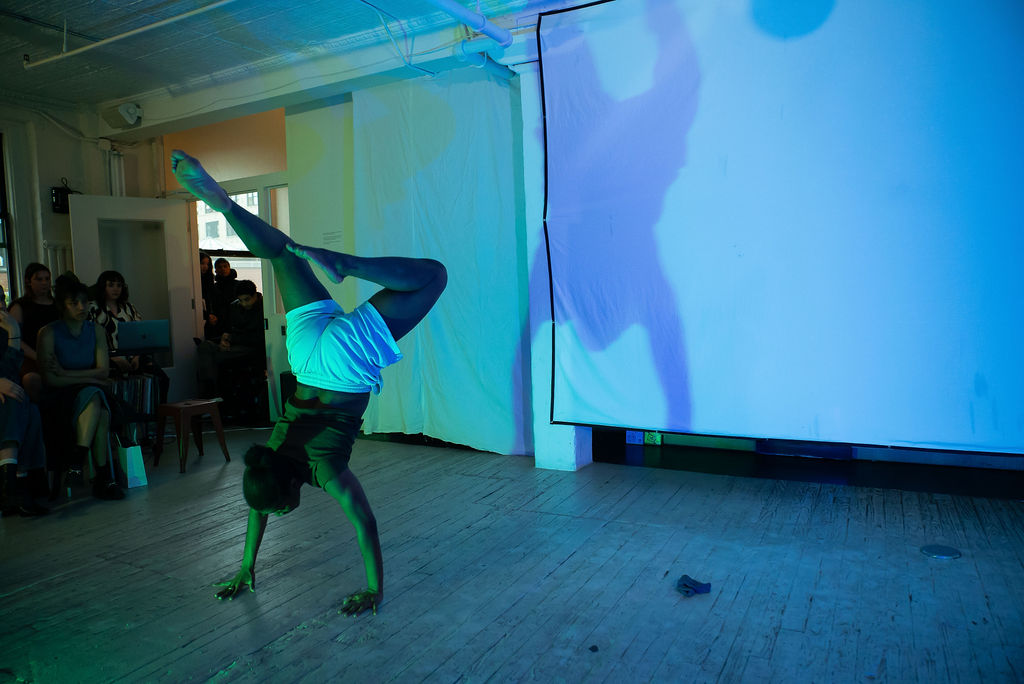
Yolette A Yellow-Duke's solo, 26 postures pass/fail, was both vigorous and pensive. To the sound of a relentless metronome, their sweeping arms and spine articulations were noodly yet internally direct — a compelling juxtaposition. Their torso led the way and their limbs trailed behind. I thought about posture as impetus, and was left with new questions about the function and meaning of intention in solo performance.
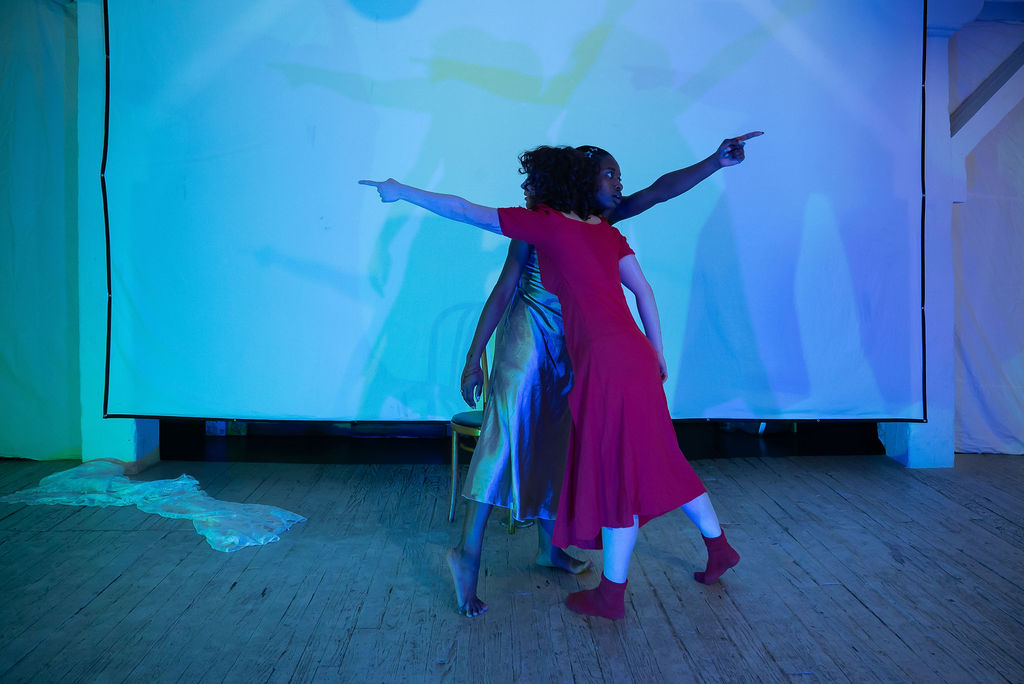
ORYI by Madi O’Halloran and Sumayyah Smith was intense, lawless, and ruthless. In long dresses, they performed a sort of old-fashioned femininity: fierce yet careful—but not out of fear. As they unapologetically thrashed and convulsed to graceful music, parts of the work reminded me of a stereotypical “mad” or “death” scene in a classical story ballet. But instead of a singular, distressed femme spiraling, Madi and Sumayyah acknowledged one another and in doing so, they found a new ferocity. ORYI, with its wild abundance, considered the possibilities of unified womanhood.
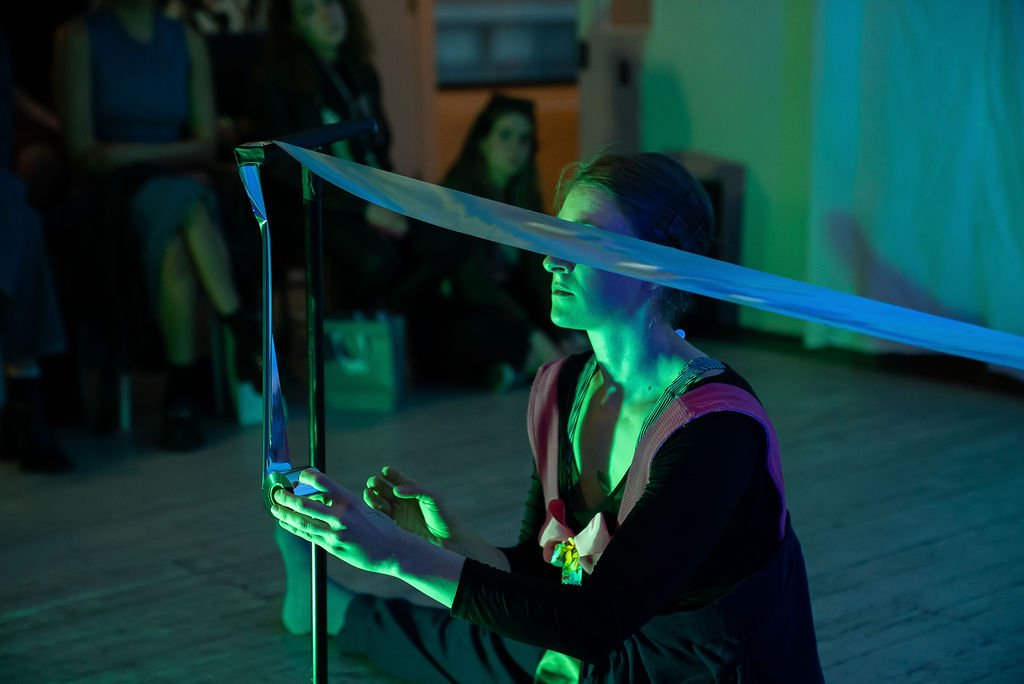
Adrienne Swan’s Seeing / Secret Seasons was equally abundant with a completely different tone of intensity: strikingly linear and utterly clear. Their movements were directed by the weight of their bones, but they were in control, harnessing the momentum and using it to create detailed gestures. The dance was linear and therefore loose, their body unlocked and composed. This geometrical calm was punctuated by extreme facial expressions —disgust, a silent scream — and movements that departed from the vocabulary; a deep knee bend was startling. The work culminated with a task involving a silver streamer and a sort of pulley system; Adrienne was calmly completing it while ever so slightly aware of the audience. The mechanics of the task were delightfully reminiscent of their easeful, intricate movement quality.

In a full-throttle return from intermission, Peter Alfred Elizalde’s the discotech is where i go to experience unmatched joy and profound sadness was an amalgamation of queer culture, contemporary dance, and idiosyncratic humor. Peter and performers Faride Henaine Gutierrez, MJ Markovitz, and Arzu Salman were serious, flirty, and funny; each element was interchangeable and reliant on the others. Midway through the work, the soundscore dictated driving directions—first, literal directions, but then manual instructions for operating a vehicle. This audio alongside animal masks, patty-cake, theater kisses, and spontaneous tendus was indicative of the beautiful complexities of rave culture.
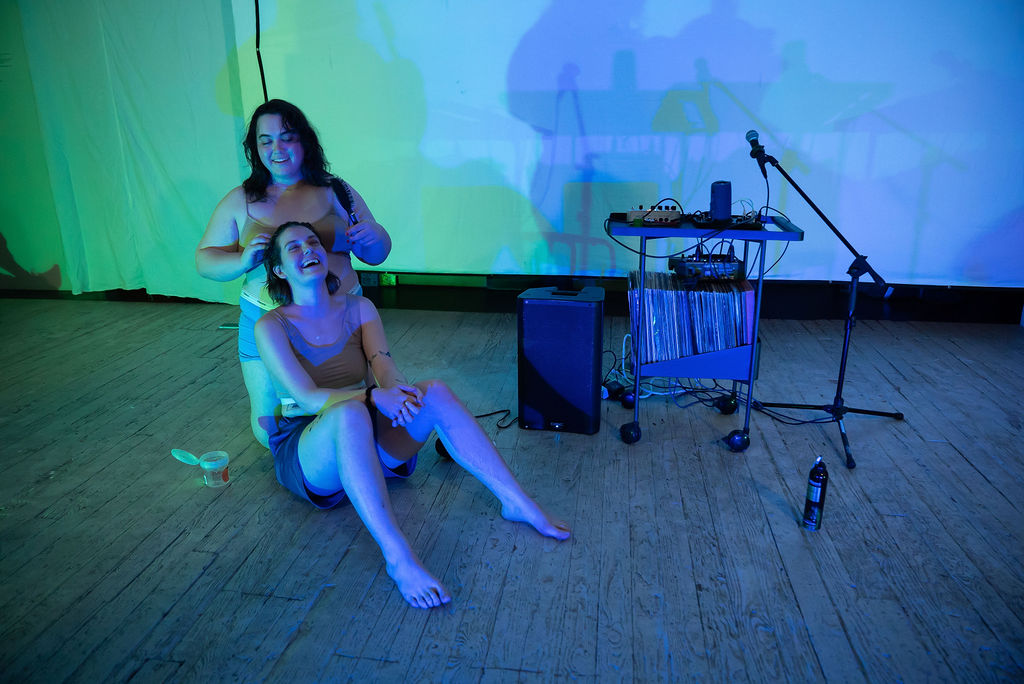
High Pony by Mack Lawrence and Lulu West began with a “tutorial for detangling your girlfriend’s hair,” which Mack lovingly demonstrated before engaging in a messy duet with a bottle of mousse. They played with mounds of it on their limbs, in their hair, and on their clothes. When it glopped onto the floor, it quietly yet comically interrupted Lulu’s enrapturing microphone vocalizations. It stayed dry no matter where it stuck—a uniquely unsettling substance that became a clear, abundant metaphor when Mack and Lulu described each other’s gender euphoria and dysphoria experiences from their adolescent lives. Lulu, with her tangled and exquisite soundscape was the grounding energy to Mack’s dreamy wonder and swirling movement. The spell of High Pony broke only when Mack turned to Kayla and Taylor and said, “I’m going to clean that up,” (re: mousse.)
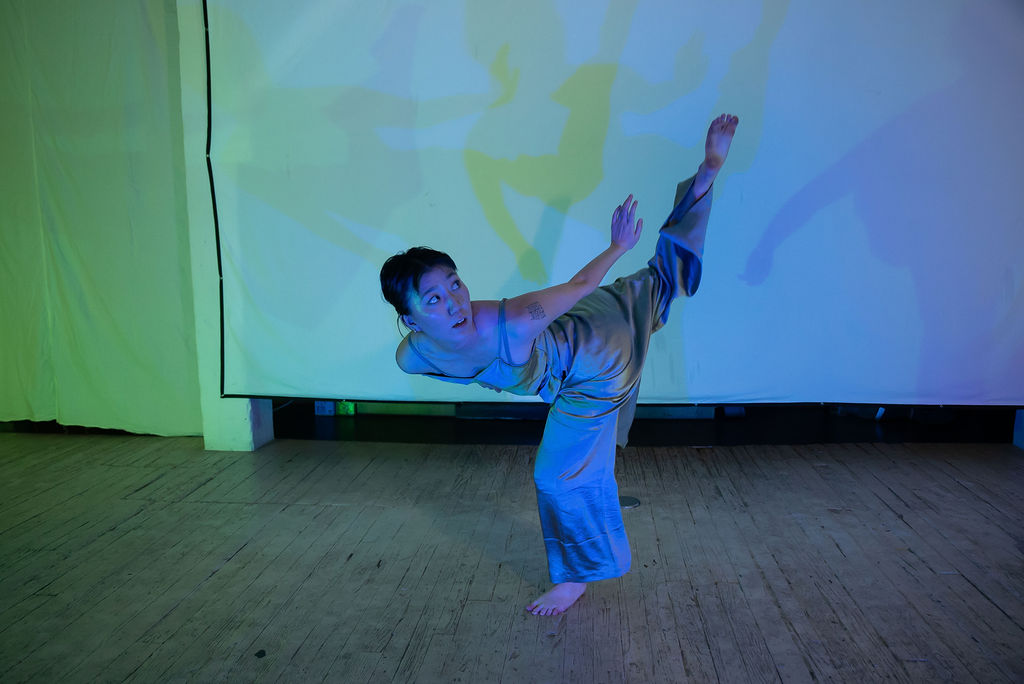
Kimie Parker closed the evening with an elegant, perceptive solo entitled fig jam. She was calm and aware, expressing an undoubtedly genuine internal experience. Restaurant audio, string instruments, and a silk dress and pants that were effervescent in the light provided context, but the material — graceful and effortful — was executed with such stunning clarity that I could not fixate on anything else. Generously present, Kimie was making distinct choices of weightedness or weightlessness over and over again, and she was captivating. No sentence was entirely complete, and therefore I was not ahead of her or behind her, I was with her.
And isn’t that the whole thing? Being together, tracing the present moment, this moment, this show… that show.




